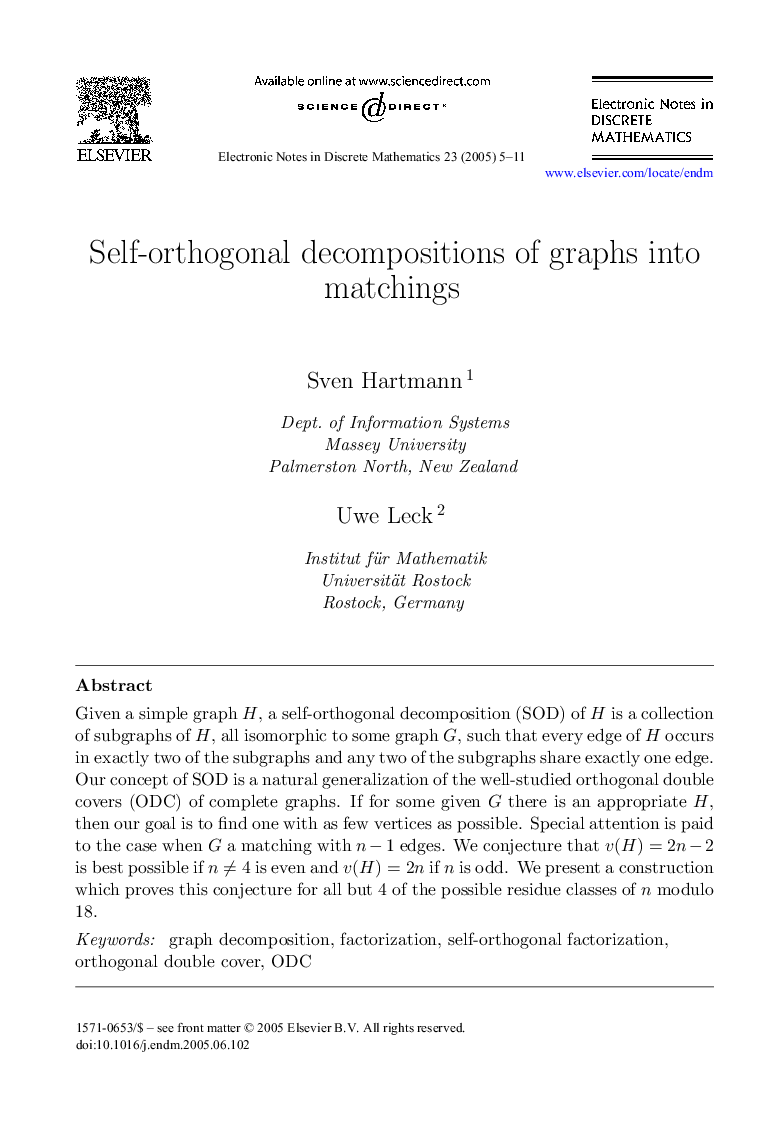| Article ID | Journal | Published Year | Pages | File Type |
|---|---|---|---|---|
| 9514619 | Electronic Notes in Discrete Mathematics | 2005 | 7 Pages |
Abstract
Given a simple graph H, a self-orthogonal decomposition (SOD) of H is a collection of subgraphs of H, all isomorphic to some graph G, such that every edge of H occurs in exactly two of the subgraphs and any two of the subgraphs share exactly one edge. Our concept of SOD is a natural generalization of the well-studied orthogonal double covers (ODC) of complete graphs. If for some given G there is an appropriate H, then our goal is to find one with as few vertices as possible. Special attention is paid to the case when G a matching with nâ1 edges. We conjecture that v(H)=2nâ2 is best possible if nâ 4 is even and v(H)=2n if n is odd. We present a construction which proves this conjecture for all but 4 of the possible residue classes of n modulo 18.
Related Topics
Physical Sciences and Engineering
Mathematics
Discrete Mathematics and Combinatorics
Authors
Sven Hartmann, Uwe Leck,
